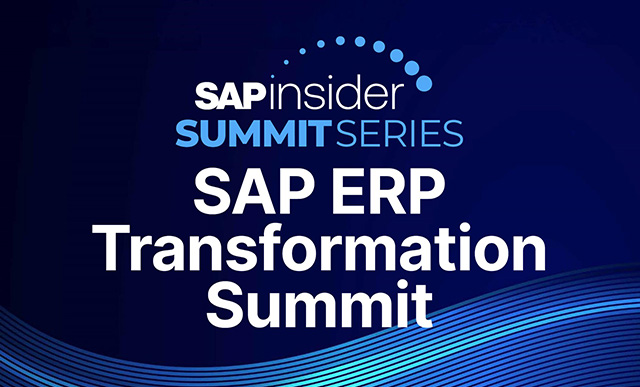SAP PLM
Filter By
Browse By
- SAP Analytics and AI
- SAP Application Development and Integration
- All SAP Application Development and Integration
- SAP ABAP
- SAP ABAP Development Tools
- SAP ABAP Test Cockpit
- SAP API Management
- SAP BAPI
- SAP Basis
- SAP BRF
- SAP Business Application Studio
- SAP CMS
- SAP Design Studio
- SAP Development Tools
- SAP DevOps
- SAP EAI
- SAP EDI
- SAP Extension Suite
- SAP Fiori
- SAP Fiori Elements
- SAP Integration Suite
- SAP Low Code Application Development
- SAP Low Code Automation
- SAP Netweaver
- SAP Release Management
- SAP UI5
- SAP Web Application Server
- SAP Web IDE
- SAP Business Process Management
- SAP Center of Excellence
- SAP CIO
- SAP Customer Experience
- SAP Data and Data Management
- All SAP Data and Data Management
- SAP BW
- SAP BW/4HANA
- SAP Crystal Reports
- SAP Data Archiving
- SAP Data Center
- SAP Data Governance
- SAP Data Integration
- SAP Data Migration
- SAP Data Quality
- SAP Data Services
- SAP Data Strategy
- SAP Data Visualization
- SAP Data Warehouse Cloud
- SAP DMS
- SAP Document Control
- SAP EIM
- SAP ETL
- SAP ETL Tools
- SAP HANA
- SAP HANA Administration
- SAP HANA Deployment Infrastructure
- SAP HANA Studio
- SAP Master Data
- SAP Master Data Governance
- SAP MDM
- SAP Enterprise Architect
- SAP Enterprise Asset Management
- SAP ERP
- SAP Finance
- All SAP Finance
- SAP Accounting
- SAP AR AP
- SAP Asset Accounting
- SAP Billing Systems
- SAP BPC
- SAP BRIM
- SAP Cash Management
- SAP Central Finance
- SAP Controlling
- SAP COPA
- SAP Cost Center Accounting
- SAP Currency Risk
- SAP e-invoicing
- SAP FICO
- SAP Finance Automation
- SAP Advanced Financial Closing
- SAP Financial Consolidation
- SAP Financial Planning
- SAP FX Risk
- SAP General Ledger
- SAP Global Tax Management
- SAP Hyperion
- SAP Order to Cash
- SAP Payment Processing
- SAP Profitability Analysis
- SAP Rebate Management
- SAP S/4HANA Finance
- SAP SWIFT Compliance
- SAP Treasury Management
- SAP Universal Journal
- SAP Governance Risk and Compliance
- SAP Human Capital Management
- SAP Intelligent Technologies
- SAP Platform and Technology
- All SAP Platform and Technology
- SAP Business Technology Platform
- SAP Cloud
- SAP Cloud Connector
- SAP Cloud Integration Platform
- SAP Cloud Migration
- SAP Cloud Platform
- SAP Cloud Providers
- SAP Cloud Strategy
- SAP Digital Signature
- SAP Container Platform
- SAP HANA Enterprise Cloud
- SAP Digital Asset Management
- SAP Smart Forms
- SAP HEC
- SAP Digital Integration Hub
- SAP Hyperscalers
- SAP Infrastructure
- SAP Messaging
- SAP Quality and Testing
- SAP Security
- SAP Spend Management
- SAP Supply Chain Management
- All SAP Supply Chain Management
- SAP APO
- SAP Asset Management
- SAP Business Network
- SAP Digital Manufacturing Cloud
- SAP Digital Twin
- SAP EWM
- SAP IBP
- SAP Inventory Management
- SAP Label Printing
- SAP Logistics
- SAP Manufacturing
- SAP Manufacturing Automation
- SAP MES
- SAP MII
- SAP MM
- SAP MRO
- SAP MRP
- SAP Order Management
- SAP Plant Maintenance
- SAP PLM
- SAP Production Planning
- SAP S&OP
- SAP SD
- SAP SPM
- SAP Supply Chain Planning
- SAP Track and Trace
- SAP Transportation Management
- SAP System Administration
What Is Product Lifecycle Management?
Product lifecycle management (PLM) includes the phases of managing a product from its inception until its disuse. These phases include design, material sourcing, manufacturing, and customer sale. A structured and collaborative PLM process is essential to ensure that all the necessary business units are included in product decision-making. A siloed approach to PLM leaves the company vulnerable to costly defects and development delays.
SAP Product Lifecycle Management
SAP offers its SAP Product Lifecycle Management (SAP PLM) solution to help companies design their products, bring them to market faster, and achieve larger profit margins.
What Is Product Lifecycle Management?
Product lifecycle management (PLM) includes the phases of managing a product from its inception until its disuse. These phases include design, material sourcing, manufacturing, and customer sale. A structured and collaborative PLM process is essential to ensure that all the necessary business units are included in product decision-making. A siloed approach to PLM leaves the company vulnerable to costly defects and development delays.
SAP Product Lifecycle Management
SAP offers its SAP Product Lifecycle Management (SAP PLM) solution to help companies design their products, bring them to market faster, and achieve larger profit margins.
Key capabilities of SAP PLM include:
- Thorough portfolio management
- Product cost calculation and simulation
- Simulation-based digital twin and virtual sensors
- Product collaboration and visualization.
Vendor partners for SAP PLM include: 1EQ, CENIT AG, CIDEON Software GmbH, Linx-AS LLC, and SEAL Systems.
Intelligent Product Lifecycle Management
With digital technologies now playing a critical role for companies, it’s not surprising that artificial intelligence, machine learning, and predictive analytics are being integrated into the PLM process. According to SAPinsider’s Intelligent PLM Benchmark Report, PLM “can provide strategic value to an organization, driving top- and bottom-line improvements across the product lifecycle. However, powered by analytics tools that allow critical information to be accessed quickly and easily, agile and intelligent PLM is poised to take the use of data and intelligence across the product lifecycle to a whole new level.”
Key Consideration for SAPinsiders
- Inside a Multi-Phased SAP Digitization Journey II. Learn how Varian Medical Systems leveraged the SAP PLM solution to ensure its products were compliant with the European Union’s Restriction of Hazardous Substances (RoHS) Directive.
- Blue Diamond Growers Cultivates Quality. In an effort to transform its research and development (R&D) processes and reduce time to market for products, Blue Diamond Growers selected SAP PLM as the solution to integrate with its SAP ERP suite.
- Support for Connected Products Begins with Design. The design of connected products redefines R&D’s role in how it serves an evolving PLM strategy for a digital enterprise. Having real-time insights into a product’s ongoing performance presents a wealth of opportunities and challenges. To meet both, organizations must ensure R&D has the tools it needs to make smart decisions in support of smart products, the article argues.
134 results
-

- SAP Supply Chain Management
 Premium
Premium
Transforming the Labeling Process with Loftware Cloud
Reading time: 2 mins
Cloud technology is significantly transforming how industries operate by enabling the digital shift of key business systems such as ERP, CRM, WMS, and PLM to cloud-based platforms. This transition allows businesses of all sizes to move away from on-premise infrastructure toward SaaS models. A critical consideration in this shift is the integration of labeling systems…
-

Ensuring Stable Operations with Consulting-based Application Management Services
Reading time: 2 mins
As enterprises face challenges in managing SAP applications due to a lack of in-house expertise, many are outsourcing to Application Management Service providers like cbs Corporate Business Solutions, which offer comprehensive support and consulting to ensure stable operations and scalability without the high costs of maintaining internal teams.
-

From Complexity to Control: Driving Aerospace and Defense innovation with SAP S/4HANA and Protiviti
Reading time: 3 mins
Digital transformation in the aerospace and defense industry, driven by SAP S/4HANA, is essential for organizations to enhance efficiency, ensure compliance, and manage operational complexity, with Protiviti serving as a key partner in this transformative journey.
-
-

 Premium
Premium
Project System Achieves Faster Closes When Using the Engineer-to-Order Process
Reading time: 12 mins
The Project System (PS) module has a functionality called project-related incoming orders that allows you to report on incoming order values for an engineer-to-order process. The PS module can calculate order book and backlog values throughout the project life cycle. It allows you to avoid negative backlog and remaining backlog on closed projects. Three examples...…
-

 Premium
Premium
Expand PS Master Data by Adding New Fields to Project Builder
Reading time: 28 mins
The available fields in the PS master data are often insufficient to cover a company’s needs. The author describes partner functionality, user-defined fields, and customer-specific fields, which are three different options to incorporate additional fields into the project master. He discusses their advantages and shortcomings and the steps to implement them. When most businesses implement...…
-

 Premium
Premium
Integrate Service Vendors into Your SAP Time Sheet Process
Reading time: 14 mins
Many companies increasingly use service vendors to staff their projects. Integrating those contractors into your SAP processes reduces administrative tasks, cuts time-to-close, and increases the quality of your financial data. Many companies are not using the provided functionality to its full extent, some because they are unaware of it and others because of drawbacks generated...…
-

 Premium
Premium
Don’t Wait Until After Go-Live to Set Up Cross-Company Code Controlling
Reading time: 16 mins
A wrong decision during the setup of your organizational structure can lead to a loss of functionality in logistics and controlling. You can avoid a costly reorganization of your database with cross-company code controlling. Hear about the pros and cons and learn the prerequisites for its configuration. Key Concept Organizational structure design is one of...…
-
-

 Premium
Premium
10 Lessons for Building the Web as a Sales Channel Leveraging Existing Processes
Reading time: 11 mins
ManagementSee how a major healthcare industry supplier implemented Web Channel for SAP CRM, integrating it with its preexisting order-to-cash system and product catalogs. Organizations are increasingly emphasizing the Web as a driver of sales and growth. Many organizations want to use their existing infrastructure and processes to build their Web presence to grow sales and...…
-

 Premium
Premium
Understand the R/3 Classification System and How to Extract Classification Data into BW
Reading time: 15 mins
The classification system in R/3 provides BW with characteristics that are similar to InfoObject attributes. Classification attributes are not delivered with the system, however, and must be created and maintained by end users. No predefined DataSources are available in BW for this highly customized data. The author explains the classification system and how to extract...…
-

 Premium
Premium
In-House Cash Center Manages Payment Processes
Reading time: 13 mins
For many global companies, it makes sense to reduce overhead by consolidating their payment processes. SAP users can accomplish this by using the In-House Cash (IHC) component. The author describes the capabilities and configuration of the IHC. Many global companies face the challenge of reducing the cost and number of intra-group and external payments. One...…
Become a Member
Unlimited access to thousands of resources for SAP-specific expertise that can only be found here.
Become a Partner
Access exclusive SAP insights, expert marketing strategies, and high-value services including research reports, webinars, and buyers' guides, all designed to boost your campaign ROI by up to 50% within the SAP ecosystem.
Upcoming Events
-

SAPinsider ERP Transformation Summit
October 22 - 23, 2025
New Orleans, Louisiana
United States
View Event
Related Vendors
Your request has been successfully sent

